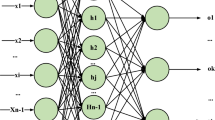Abstract
In order to improve the accuracy of e-commerce decision-making, this paper proposes an investment decision-making support model in e-commerce based on deep learning calculation to support the company. Investment decision-making system is not only an important means of enterprise investment and financing, but also an important way for investors to make profits. It also plays an important role in macroeconomic regulation, resource allocation and other aspects. This paper takes investment data related to Internet and e-commerce business as the research object, studies the theory and method of investment decision-making quality evaluation at home and abroad, and puts forward a prediction model of company decision-making quality evaluation based on deep learning algorithm, aiming at providing decision support for investors. Then a neural network investment quality evaluation model is constructed, including model structure, parameters and algorithm design. The experimental data are input into training, and the data processing process and prediction results are displayed. Experiments show that the evaluation indexes of prediction model is mainly used to judge the quality of investment of Internet or commercial enterprises. Based on this deep learning model, various index data of enterprises are analyzed, which can assist investors in decision-making.












Similar content being viewed by others
References
Schmidhuber, J. (2015). Deep learning in neural networks: An overview. Neural Networks,61, 85–117.
Ghadai, S., Balu, A., Sarkar, S., et al. (2018). Learning localized features in 3D CAD models for manufacturability analysis of drilled holes. Computer Aided Geometric Design,62, 263–275.
Aouadni, I., & Rebai, A. (2017). Decision support system based on genetic algorithm and multi-criteria satisfaction analysis (MUSA) method for measuring job satisfaction. Annals of Operations Research,256(1), 3–20.
Ghasemi, F., Mehridehnavi, A., Pérez-Garrido, A., et al. (2018). Neural network and deep-learning algorithms used in QSAR studies: Merits and drawbacks. Drug Discovery Today,23(10), 1784–1790.
Yang, Y., Feng, X., Chi, W., et al. (2018). Deep learning aided decision support for pulmonary nodules diagnosing: A review. Journal of Thoracic Disease,10(S7), S867–S875.
Chong, E., Han, C., & Park, F. C. (2017). Deep learning networks for stock market analysis and prediction. Expert Systems with Applications,83, 187–205.
Barros, P., Parisi, G. I., Weber, C., & Wermter, S. (2017). Emotion-modulated attention improves expression recognition: A deep learning model. Neurocomputing,253, 104–114.
Xiao, G., Jaarsveld, W. V., Ming, D., et al. (2018). Models, algorithms and performance analysis for adaptive operatingroom scheduling. International Journal of Production Research,56(4), 1389–1413.
Ślęzak, D., Grzegorowski, M., Janusz, A., et al. (2018). A framework for learning and embedding multi-sensor forecasting models into a decision support system: A case study of methane concentration in coal mines. Information Sciences,451–452, 112–133.
Kraus, M., & Feuerriegel, S. (2017). Decision support from financial disclosures with deep neural networks and transfer learning. Decision Support Systems,104, 38–48.
Nweke, H. F., Ying, W. T., Al-Garadi, M. A., et al. (2018). Deep learning algorithms for human activity recognition using mobile and wearable sensor networks: State of the art and research challenges. Expert Systems with Applications,105, 233–261.
Chen, Miaochao, & Liu, Qilin. (2016). Blow-up criteria of smooth solutions to a 3D model of electro-kinetic fluids in a bounded domain. Electronic Journal of Differential Equations,2016(128), 1–8.
Shameer, K., Badgeley, M. A., Miotto, R., et al. (2017). Translational bioinformatics in the era of real-time biomedical, health care and wellness data streams. Briefings in Bioinformatics,18(1), 105–124.
Sanfey, A. G., Rilling, J. K., Aronson, J. A., Nystrom, L. E., & Cohen, J. D. (2003). The neural basis of economic decision-making in the ultimatum game. Science,300(5626), 1755–1758.
Venkateswara, H., Chakraborty, S., & Panchanathan, S. (2017). Deep-learning systems for domain adaptation in computer vision: Learning transferable feature representations. IEEE Signal Processing Magazine,34(6), 117–129.
Kong, H., Fang, Y., Fan, L., et al. (2019). A novel torque distribution strategy based on deep recurrent neural network for parallel hybrid electric vehicle. IEEE Access,7, 65174–65185.
Zhao, F., Yi, Z., Wang, G., et al. (2018). A brain-inspired decision making model based on top-down biasing of prefrontal cortex to basal ganglia and its application in autonomous UAV explorations. Cognitive Computation,10(2), 296–306.
Komisarczuk, P., Komisarczuk, P., Komisarczuk, P., et al. (2017). A survey on reinforcement learning models and algorithms for traffic signal control. ACM Computing Surveys,50(3), 1–38.
Chen, Miaochao, Shengqi, Lu, & Liu, Qilin. (2018). Global regularity for a 2D model of electro-kinetic fluid in a bounded domain. Acta Mathematicae Applicatae Sinica-English Series,34(2), 398–403.
Kharazmi, P., Zheng, J., Lui, H., et al. (2018). A computer-aided decision support system for detection and localization of cutaneous vasculature in dermoscopy images via deep feature learning. Journal of Medical Systems,42(2), 33.
Sultana, A., Fernando, X., & Zhao, L. (2017). An overview of medium access control strategies for opportunistic spectrum access in cognitive radio networks. Peer-to-Peer Networking and Applications,10(5), 1113–1141.
Böttiger, Y., Laine, K., Korhonen, T., et al. (2018). Development and pilot testing of PHARAO—a decision support system for pharmacological risk assessment in the elderly. European Journal of Clinical Pharmacology,74(3), 365–371.
Ifenthaler, D., & Widanapathirana, C. (2014). Development and validation of a learning analytics framework: Two case studies using support vector machines. Technology, Knowledge and Learning,19(1–2), 221–240.
Author information
Authors and Affiliations
Corresponding author
Ethics declarations
Conflict of interest
The authors declare that there are no conflicts of interest.
Additional information
Publisher's Note
Springer Nature remains neutral with regard to jurisdictional claims in published maps and institutional affiliations.
Rights and permissions
About this article
Cite this article
Lei, Z. Research and analysis of deep learning algorithms for investment decision support model in electronic commerce. Electron Commer Res 20, 275–295 (2020). https://doi.org/10.1007/s10660-019-09389-w
Published:
Issue Date:
DOI: https://doi.org/10.1007/s10660-019-09389-w




